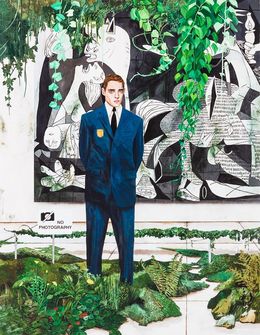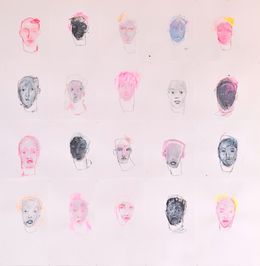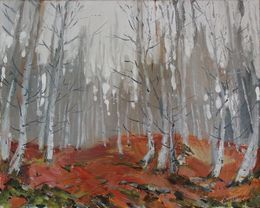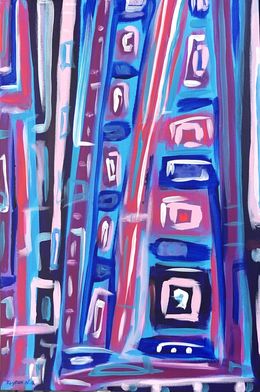
Understanding Rococo Art
Rococo art is a difficult-to-define 18th century artistic movement which extends into many fields. Rococo art encompasses architecture as well as painting, music, design, interior decoration, and even literature. Following Baroque, Rococo art is defined mainly by the fantasy and frivolity of the forms and themes addressed. It was very successful in France and later in the rest of Europe. Let’s explore Rococo art…
The origins of Rococo art
Certainly, if there was a culinary equivalent to Rococo art, one would have to imagine a large cake, covered with icing sugar, whipped cream, small drawings and praline, because Rococo art tickles our senses. Therefore, it offers the viewer an anthology of artistic artifices and fantasies designed to flatter the eye and the wit.
The term “Rococo” is originally derogatory. It designates those artistic forms which derive from Baroque, an artistic movement that mastered the staging of excessive dramatic effects at the end of the 16th century. It is also amusing to note that we find the same reference in the terminology used… First, the term “baroque” came from the Portuguese word “barroco” and designated an irregular pearl. Second, the term “rococo” uses the same phonetic structure and also designates “the rocaille,” these imitations of irregular and artificial stones that one could find in architecture and gardens. Thus, the term “rococo” is used by neoclassical artists to mock those who display so much skill in playing with these frivolous and artificial artistic forms.
The characteristics of Rococo painting
Beyond the pejorative use of the word, the term “Rococo” ended up designating an artistic movement. Its golden age was the 18th century, particularly in France, then in the rest of Europe. For instance, in painting, Rococo art is characterized by scenes showing the joy of life and gaiety… A superficial life, a little vain, a little frivolous. The days of baroque seriousness are over. Make way for pastoral scenes, little cherubs, debauchery and love stories! Painters like Honoré Fragonard, Antoine Watteau or François Boucher have understood this well. To please this 18th century aristocracy, who put the rigidity of Versailles and Louis XIV behind them, you have to be frivolous. Therefore, Rococo art works to reuse the staging and dramatic effects of the Baroque, but this time with lighter and more cheerful colors.
A Rococo masterpiece
Honoré Fragonard’s Escarpolette is a masterpiece of Rococo art. It shows a young noblewoman playing on a swing (at the time called an escarpolette). In the background, foliage abounds. The artist performs a masterful trick in rendering these fanciful vegetable textures. In the foreground, all is frivolity and play. The young girl swings, in full imbalance, in full asymmetry. She is having so much fun that she drops her shoe – it flies in the air. How funny… She smiles, a little provocatively and playfully. Her dress goes in all directions, fiercely, in a ballet of silks, lace and volutes. We even see her legs: how indecent!
Little by little, the scene is revealed. In the shadow to the right, we see the man she came with. He’s the one pushing the swing. Yet, he’s not the one we look at first, no. The one who intrigues us is the man to the left of the painting. He was hidden in the bush and was run down by the young girl. But he’s not complaining, on the contrary: his gaze seems frozen in ecstasy towards the young girl’s undergarment. By his delighted look, you can only tell he can see the interior of her thighs. The young girl knows it, she looks at him, she plays with him: it must be her lover. While a sculpture of two little cherubs seems to observe the scene, dumbfounded, a ray of light illuminates another sculpture.
A cupid puts his finger on the lips to tell us to be silent. Hush! Let’s stay frivolous…
The variety of styles in Rococo art
Rococo art is magical in that it portrays a universe of joys and pleasures. It is also reflected in the decorative arts and architecture. In France in particular, Rococo art is often associated with “Rocaille style” or “Louis XV style.” Although very similar (not to say synonymous) historians consider that these styles cover different realities. Note that these terms are only historical terminologies that were not used at the time. They are therefore artificially created names, and thus imperfect.
Rococo art in the decorative arts experienced a golden age in the mid-18th century. It particularly affects interior decoration, furniture and objects that are both decorative and functional. Generally, we can find a lot of fantasy, with curved and asymmetrical lines, reminiscent of the scrolls of shells or foliage. Rococo decorative arts make abundant use of patterns of flowers, leaves, fruits, and ribbons. To accentuate cheerfulness and luminosity, they favor light shades (white, ivory and gold) and the insertion of paint and mirrors in all available spaces.
Thus, on the ironwork, tableware, ceilings and fireplace frames, cabinets and armchairs, we see Rococo art. In architecture some of these principles are also applied, but few in France. The principles of Rococo art are found particularly in Bavaria and Prussia. And even, in a way, in the great monuments of Saint Petersburg.
The rebirth of Rococo art
Rococo eventually went out of fashion. At the end of the 18th century, the intellectuals favored a return to a more solemn, more rigid art. People like Voltaire criticize this style, which he described as “degenerate” and “superficial.” Jean François Blondel, a great French architect, declared the style to be a “ridiculous jumble of shells, dragons, reeds, palm trees and other plants.” That marked the rise of neoclassicism, with Jacques Louis David at the forefront…
Rococo art is not dead… While it does designate an artistic movement of the 18th century, limited in time, it has experienced a renewed interest in recent decades. Thanks to globalization and a pronounced taste for “French luxury,” the Rococo style is reborn from its ashes. For example, in five-star hotels, in bourgeois interiors, and among wealthy foreigners, we see more and more furniture appearing with fanciful and overloaded forms. The use of satin and gilding, sculpted or molded patterns, curved shapes and noble materials are all reminiscent of this Rococo style.
Ironically, this Neo-Rococo movement continues to be mocked by many, who criticize its overloaded and factice appearance. But the cohabitation of styles and influences today allows all sensibilities. And many contemporary artists have seized on this style to deliver a new interpretation, sometimes ironic, sometimes simply aesthetic.

About Artsper
Founded in 2013, Artsper is an online marketplace for contemporary art. Partnering with 1,800 professional art galleries around the world, it makes discovering and acquiring art accessible to all.
Learn more













